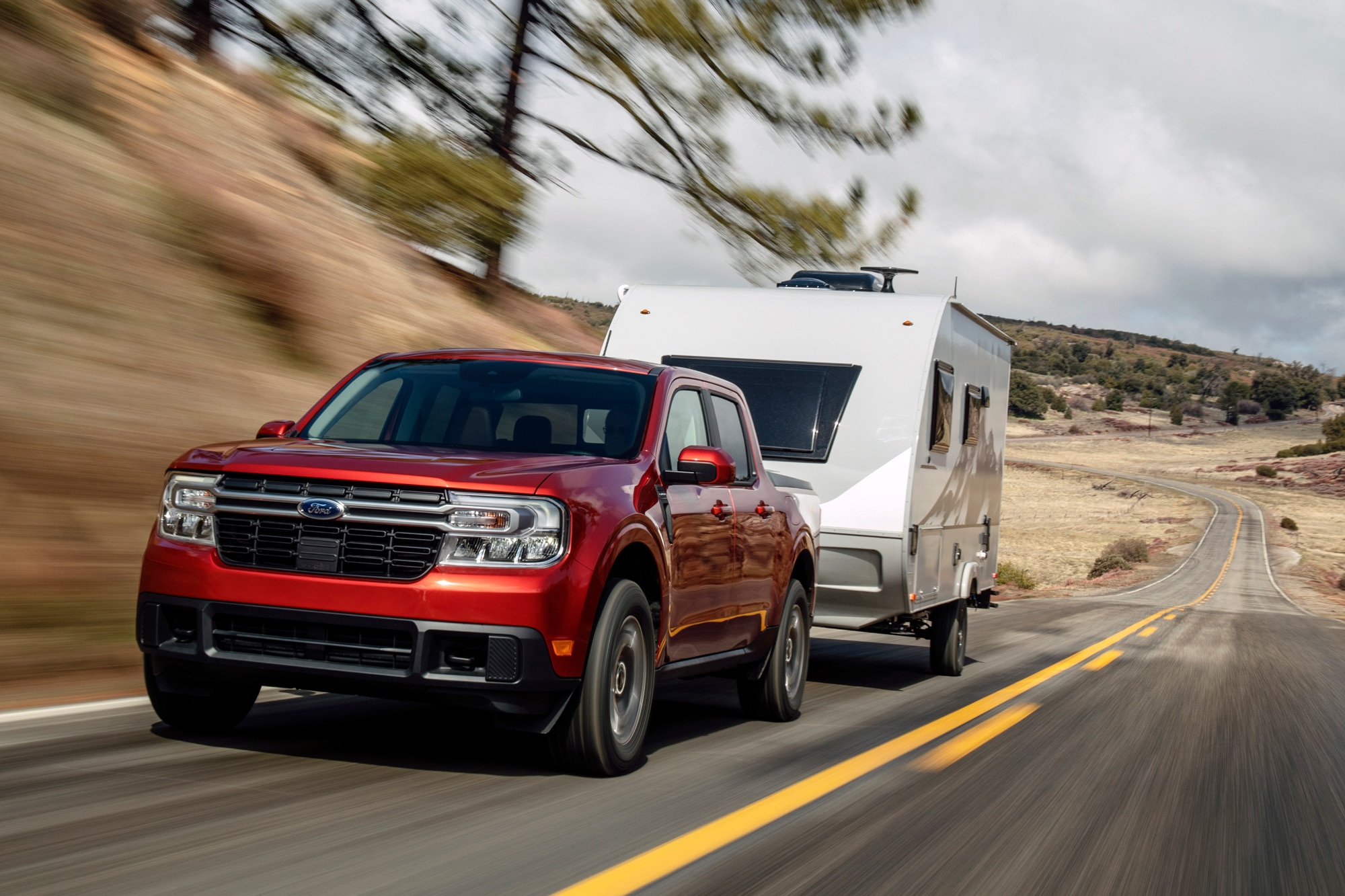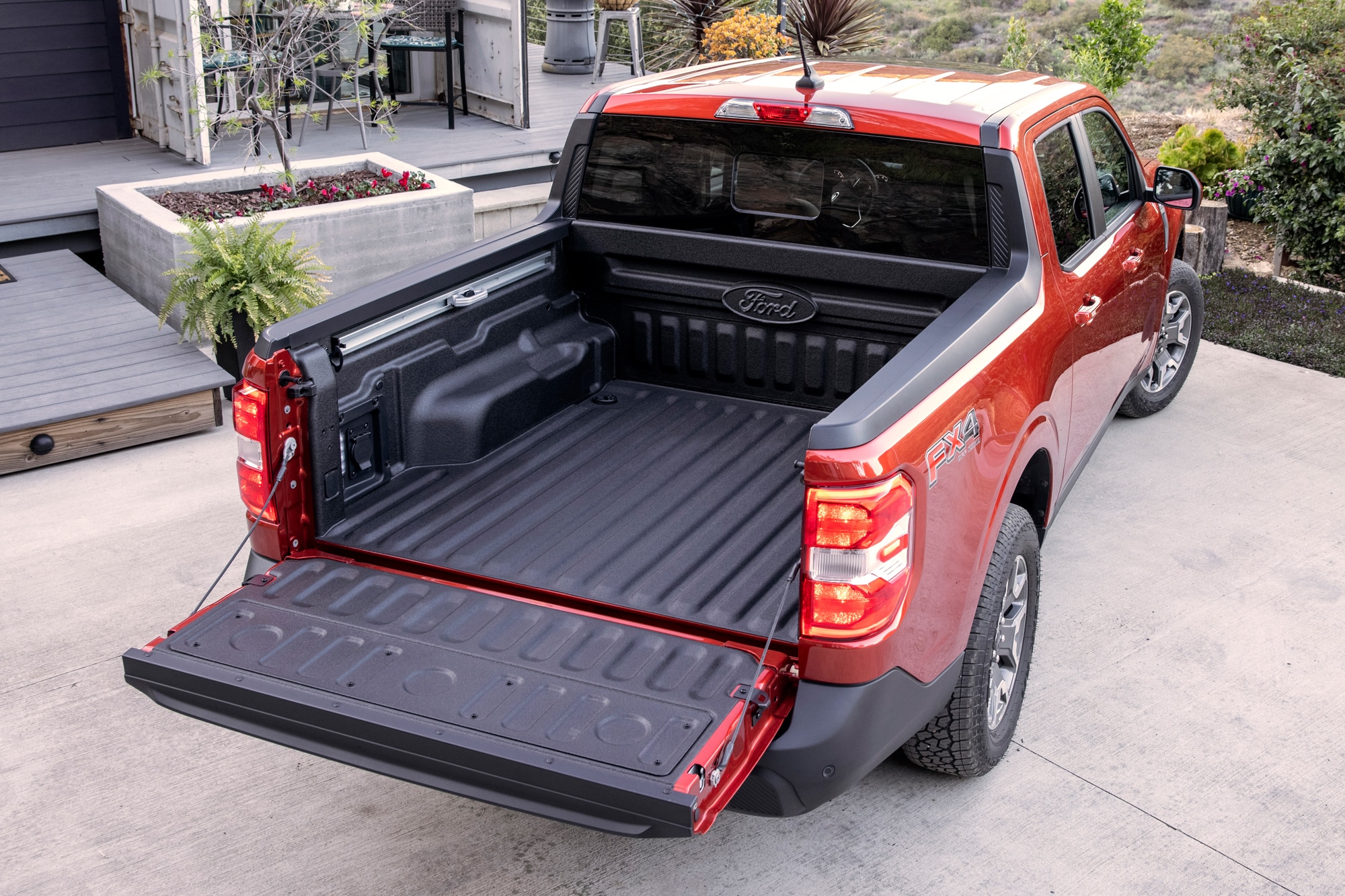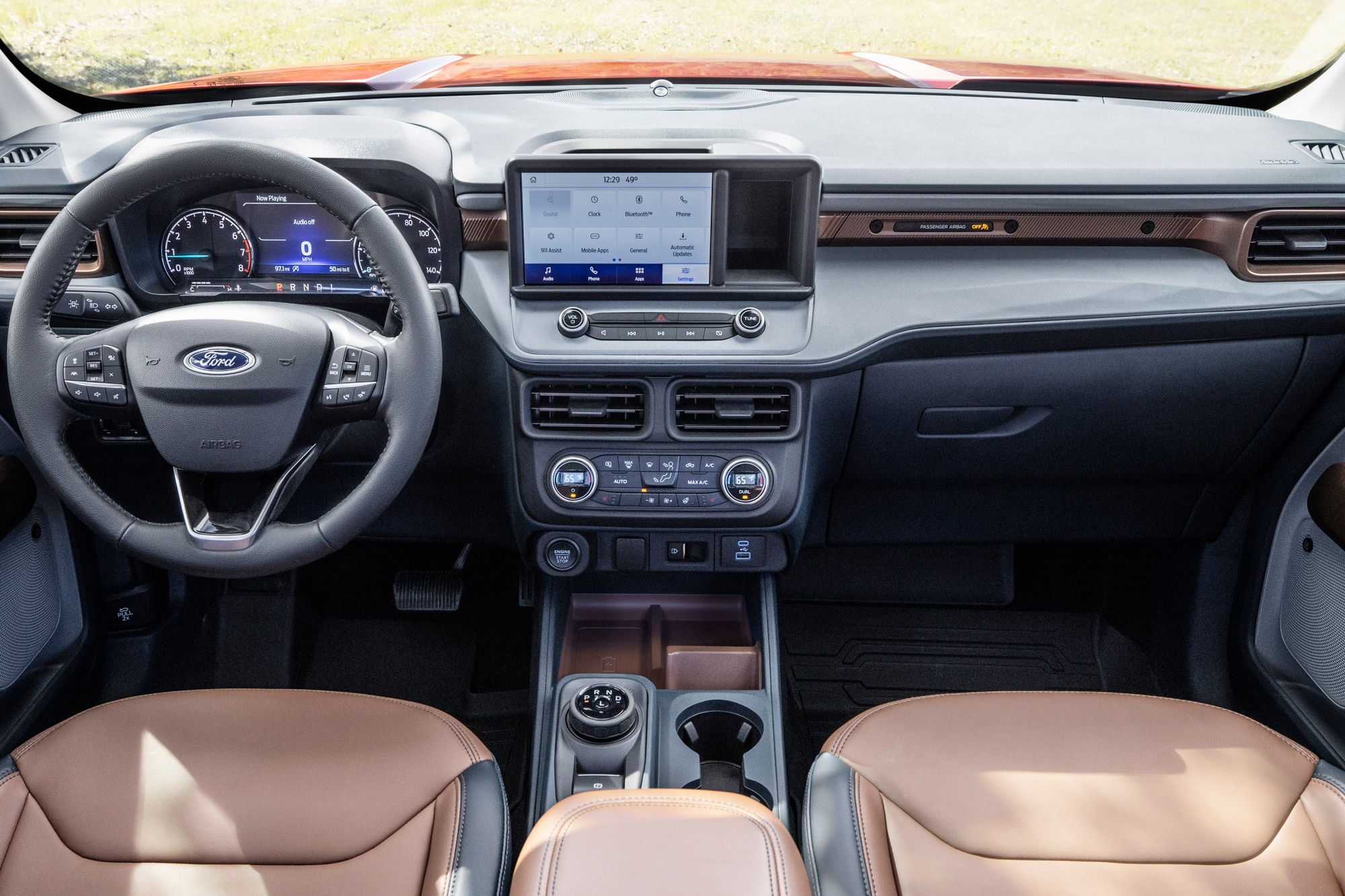Is the 2022 Ford Maverick the Future of Small Cars?
An emerging segment of compact trucks could be perfect for people who never would’ve thought to buy a pickup.
 Ford
Ford
Suppose there were a no-compromise car for the masses, something with room for five people and just about anything they could think to bring along. Something that suits Americans' desire to sit upright but that isn't unwieldy in the city. Something with off-road chops and on-road manners. Something with a peppy powertrain that doesn’t drink too much gas. Something attractive and sporty and rugged and that doesn’t break the bank.
This vehicle exists, and it’s not a concept car. It’s the new 2022 Ford Maverick, a four-door compact truck from the brand that sells more pickups than any other. Now that Ford no longer sells sedans, hatchbacks, or wagons in the U.S. due to flagging sales, the Maverick, with a base price under $21,500, will serve as the lineup’s entry point.
 Ford
Ford
Two months after the pickup’s reveal in June 2021, Bloomberg reported that Ford had received more than 100,000 reservations for the Maverick—a promising start for a vehicle that few had seen in real life, let alone driven. Interestingly, many of these reservations came from potential buyers in Los Angeles and San Francisco, cradles of the green-vehicle movement and far from the F-150’s natural habitat in suburban and rural America. We suspect that’s because the base front-wheel-drive model comes with a standard gasoline-electric hybrid powertrain that’s estimated to return 42 mpg in the city, making it the most efficient pickup on the market by a significant margin.
Fuel economy isn’t the only selling point, though. The Maverick’s bed can carry up to 1,500 pounds and features pre-wired accessory power circuits and cargo management solutions that appeal to outdoorsy types looking to hit the trail as well as DIYers needing to carry home four-by-eight sheets of drywall from Lowe’s. The truck also impresses with the latest tech (e.g., Apple CarPlay, Android Auto, a Wi-Fi hotspot), storage cubbies galore, and a smooth ride on rough pavement. Oh, and it'll tow at least 2,000 pounds and up to 4,000 pounds. Even loaded with options, the Maverick comes in under $40,000, about $5,000 less than the average price of a new vehicle.
 Ford
Ford
Several cars that are already on sale deliver better frugality than the Maverick. The Honda Insight, Hyundai Elantra Hybrid, and Toyota Corolla Hybrid all offer city fuel economy far beyond 40 mpg with well-equipped models selling for less than $30,000. And—if American car-buyers even know they exist—these vehicles are viewed with relative apathy by American car buyers. They certainly don’t inspire 100,000 people to put their name on a list for the chance to buy one. The Maverick changes all that with a 54-by-53-inch steel box on the back. The pickup bed is what makes the low price and the high fuel economy remarkable. It also gives this Ford cachet that no car could ever replicate in truck-obsessed America.
Ford’s not the only automaker reading the market signs. Before the Maverick captured the public’s interest, Hyundai debuted the Santa Cruz, a compact pickup based on its Tucson SUV, and Jeep rebooted the Gladiator, a mid-size truck that riffs on the wildly successful Wrangler franchise. What’s more, the staggering demand for electric rigs such as Tesla’s Cybertruck and Rivian’s R1T shows that the pickup’s appeal goes well beyond Bob Seger fans and that automakers can adapt the body style for buyers whose needs and desires are at the opposite end of the spectrum from the typical F-150 driver’s.
 Ford
Ford
Though others have dabbled in the small-truck field (e.g., Jeep with the Comanche, Subaru with the Baja), Honda deserves credit for reviving the idea of building a truck with car-like attributes, introducing a modern unibody pickup well ahead of its competitors. When the Japanese automaker premiered the Ridgeline mid-size pickup for the 2006 model year, truck owners sneered at it, believing it looked odd and drove like an Accord. Over time, the Ridgeline built a steady following, but its SUV-like design remained polarizing. The same reception likely awaits the Hyundai Santa Cruz, which looks very much like the bedded Tucson that it is.
The Maverick, on the other hand, goes in a different direction. It looks like a classic truck, with the boxy nose and squared-off cab that traditionalists crave, even though it too is based on and borrows its styling from a crossover, the Bronco Sport. Given its low price and small (but tall) footprint—it’s slightly narrower and only a few inches longer than a Honda Accord—the Maverick will surely appeal to a wide audience. If all goes to (Ford’s) plan, it could be as disruptive as the iPhone. Which is to say, the Maverick might just be the vehicle Americans never knew they wanted but suddenly can’t live without.
Written by humans.
Edited by humans.
 Andrew Lawrence
Andrew LawrenceAndrew Lawrence learned to read from car magazines, learned to write drafting complaint letters to Audi execs, and learned to drive in a 1988 Volvo 760 Turbo wagon—and has been chasing that blissful rear-wheel drive high ever since. His main career goal is to write enough to afford owning (and repairing) a Volkswagen Phaeton.
Related articles
View more related articles